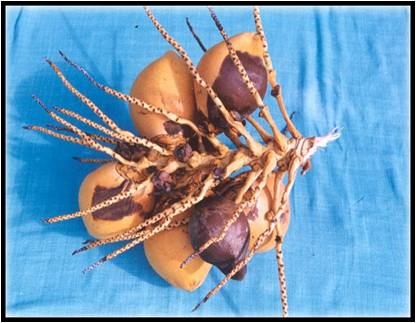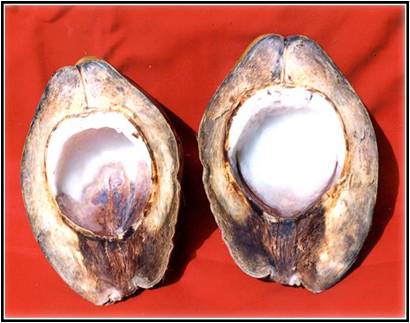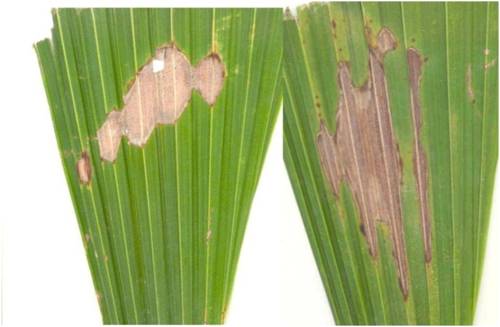IMMATURE NUT FALL
 |  |
Fungal Infection of tender nuts | Fungal Infection of mature nut |
Causal organism : Phytophthora palmivora, Thielaviopsis paradoxa and Lasiodiploida theobromae
Symptoms
| Rotting starts from the point of mite infestation on the nut surface near the perianth as dark brown to black discoloration and gradually extends to the entire surface area. | |
| The lesion also spreads deep into the internal tissues and when the lesion encircles the perianth region, the nut gets detached from the bunch and shed or remains on the bunch in between other nuts. | |
| The fungal infection spreads to the kernel and leads to grayish black discoloration and rotting. |
Disease Management
| Spraying of 0.3% Mancozeb 75WP (Indofil M-45) to affected bunches of the palms. | |
| Maximum 2 sprays at 30 days interval depending on severity |
LEAF SPOT/BLIGHT
 |
Causal organism : Pestalotiopsis palmarum and Lasiodiplodia theobromae
Symptoms
| Appearance of minute yellow spots with a grey brown margin on the outer whorl of leaves. The spots may be oval in shape measuring up to 5 cm length. | |
| The centre of the spots becomes greyish white while the brown colour of the margin deepens. | |
| Many spots coalesce to form large irregular necrotic patches or leaf blight |
Disease Management
| Remove severely infected leaves | |
| Spraying of 0.2% Mancozeb 75WP (Indofil M-45) |
